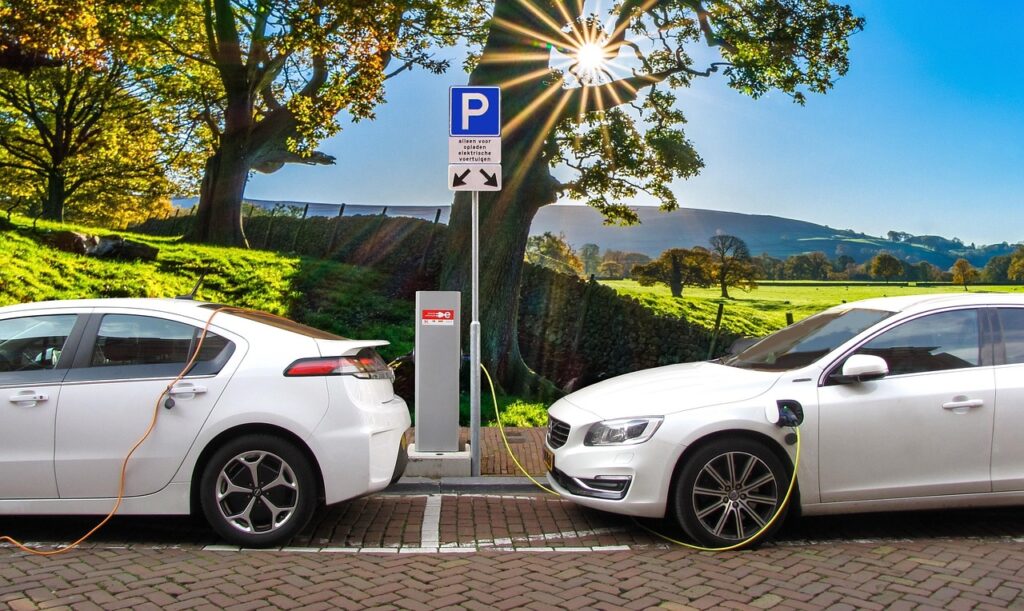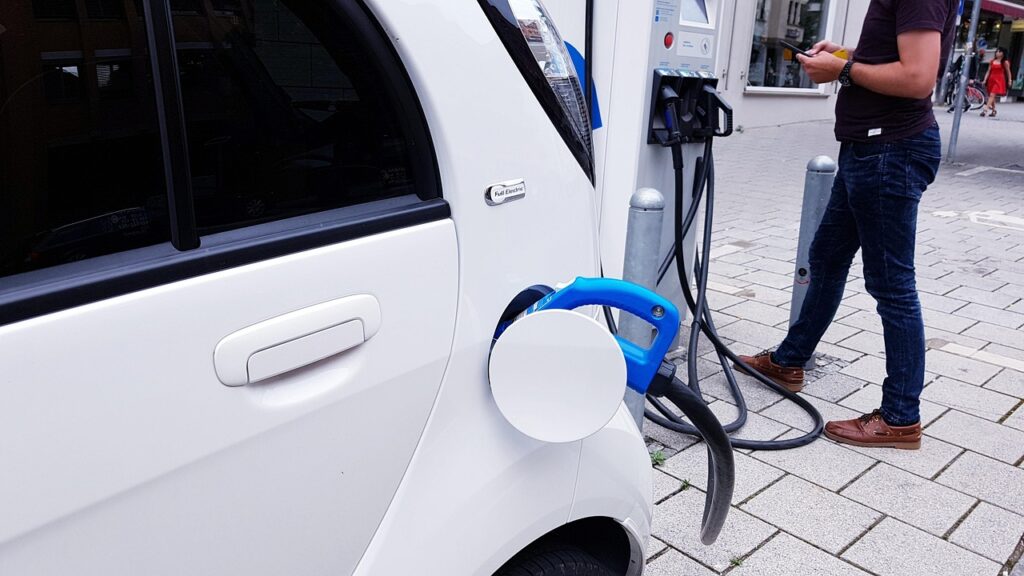Electric Car Battery Lifespan: What to Expect and How to Make It Last

When you’re thinking about buying or owning an electric vehicle, the electric car battery lifespan is one of the biggest questions on your mind. On average, these batteries last between 10 and 20 years, depending on how you use and care for your vehicle. That’s roughly 150,000 to 280,000 miles, often outlasting many components in traditional cars.
As electric vehicles become more common, knowing how long the battery will hold up helps you plan for maintenance and possible replacement costs. You’ll also learn why battery performance changes over time and what simple steps you can take to keep your battery healthy for as long as possible. This makes understanding battery lifespan not just interesting but essential for every EV owner or hopeful buyer.
Understanding Electric Car Battery Lifespan
When thinking about the electric car battery lifespan, it helps to know what impacts how long a battery lasts and what you can realistically expect. Different factors play their part in battery longevity—from the chemistry inside the cells to how manufacturers back their batteries with warranties. Let’s break down how long these batteries typically last and what causes them to lose capacity over time.
Typical Lifespan and Warranty Periods
Electric car batteries usually last between 8 and 15 years or more, depending on usage, climate, and care. In terms of mileage, many EV batteries can cover from 100,000 miles up to over 280,000 miles before showing significant decline. This range has been growing thanks to improvements in battery design and management systems.
Most electric vehicle manufacturers offer warranties that cover at least 8 years or 100,000 miles. Some even extend coverage above that, showing their confidence in battery durability. These warranties act as a safety net, assuring you that your battery is expected to perform well for a substantial period.
Here’s what you can generally expect:
- 8-10 years / 100,000 miles warranty: Standard by many car companies today.
- Up to 15 years or more: Some batteries are designed to last longer, especially in moderate climates.
- Mileage ranges: 100,000 to 200,000 miles is typical; some exceed 280,000 miles depending on maintenance and driving habits.
The takeaway? Your battery’s lifespan stretches well beyond the average warranty, and you’ll often get years of solid performance before you even need to think about replacement.
Battery Chemistry and Degradation
Electric car batteries mostly use lithium-ion technology. This chemistry provides a great balance of weight, energy storage (called energy density), and life cycle. In simple terms, lithium-ion batteries pack a lot of power into a small space, making EVs more efficient and lighter.
However, batteries naturally degrade over time. This means they lose some of their original charge capacity with each charge and discharge cycle. Typically, the annual capacity loss is around 1.8% to 2.3%, meaning after a year or two, your battery may hold about 80-90% of its initial charge.
Degradation happens mainly because of these reasons:
- Chemical changes: Inside the battery, repeated charging causes tiny chemical reactions and structural changes.
- Heat: High temperatures speed up capacity loss, which is why EVs have cooling systems to keep batteries in a safe range.
- Charging habits: Frequent fast charging creates extra stress on the battery, accelerating wear. Batteries last longer with slower, regular charging combined with keeping the charge between 20% and 80%.
Different battery types can also affect lifespan:
- Nickel Manganese Cobalt (NMC) batteries, commonly used in EVs, balance energy and longevity well with about 12-15 years expected life.
- Lithium Iron Phosphate (LFP) batteries tend to last even longer — sometimes 15-20 years — with higher cycle stability but slightly less energy density.
Your electric car’s battery pack is made up of many smaller cells, so if some cells degrade faster, the system adjusts to maintain performance. A strong battery management system monitors, balances, and protects cells to help maximize lifespan.

In short, the electric car battery lifespan depends heavily on chemistry, design, and how well the battery is cared for. With advances in technology and proper maintenance, these batteries will keep going strong for many years, making EV ownership more reliable than ever.
Factors Impacting Electric Car Battery Longevity
Your electric car battery’s lifespan doesn’t depend on just one thing—it’s a mix of several factors working together. Understanding these helps you protect your battery and keep your electric car running smoothly for years. Let’s look at some key influences on electric car battery lifespan and what you can do to maximize battery life.
Environmental Conditions and Temperature Effects
Temperature plays a major role in how fast your battery ages. Batteries don’t like extremes—hot or freezing conditions push the chemistry beyond its comfort zone and accelerate wear.
- Warm climates: Heat speeds up chemical reactions inside the battery, causing faster capacity loss. In really hot weather, you might notice your battery performance drops quicker than expected.
- Cold climates: While not as aggressive as heat, cold can reduce battery range temporarily and stress the battery when it’s recharged or driven repeatedly at low temperatures.
That’s where thermal management systems come in. Many EVs have cooling and heating setups designed to keep batteries within an ideal temperature range. These systems prevent overheating or overcooling, which dramatically slows down degradation.
To help your battery:
- Park your EV in the shade or garage during hot weather.
- Avoid charging right after driving in very hot conditions when the battery is warm.
- Pre-condition the battery (if your car supports it) before driving in cold weather.
Keeping your battery comfortable can easily add years to its useful life.
Charging Habits and Their Impact
How you charge your battery has a big say in how long it lasts. Some habits can quietly chip away at your battery capacity over time.
- Fast charging often: While DC fast chargers are convenient, frequent use causes more heat and stress. This heat speeds up battery wear.
- Charging to 100% regularly: Filling the battery completely can put extra strain on cells at the high end of their charge. Ideally, avoid topping off to 100% unless needed.
- Deep discharges: Letting your battery drain down close to zero reduces lifespan. Try to keep the charge above 20% when possible.
Best practices for charging:
- Charge mostly between 20% and 80% to reduce stress.
- Use slow or home charging for daily top-ups.
- Reserve fast charging for long trips or emergencies.
- Avoid leaving the car plugged in after it reaches full charge.
Following these tips lets your battery rest and recover, helping extend the overall lifespan.
Driving Patterns and Usage
Your everyday driving routine also influences battery health. Some driving habits wear the battery faster, while others are surprisingly gentle.
- Stop-and-go traffic: Frequent acceleration and braking create fluctuating battery loads, which can slightly speed up degradation. However, many EVs use regenerative braking to recapture energy, reducing net wear.
- Heavy acceleration: Rapid throttle use demands more power from the battery, increasing heat and stress.
- Steady highway driving: This tends to be easier on the battery, with fewer sudden power spikes.
Interestingly, real-world driving tends to be less hard on batteries than lab tests suggest. The complex pattern of city and highway driving actually helps spread out battery use, avoiding extreme conditions that degrade the cells faster.
To help your battery last longer:
- Drive smoothly and avoid aggressive acceleration.
- Use regenerative braking whenever possible.
- Plan routes that minimize long idling or stop-start jams if you can.
Maintaining moderate driving patterns will keep your battery healthier over time and improve the overall electric car battery lifespan.

Photo by Daniel @ bestjumpstarterreview.com
Cost and Replacement of Electric Car Batteries
Replacing an electric car battery is a big topic when you consider the entire ownership cost. The upfront price may seem high, but several factors ease this burden—especially warranty coverage and ongoing advancements in technology. Here, you’ll get a clear picture of what replacement costs look like today, plus how innovations in battery design are shaping smarter, less expensive repairs down the road.
Read Also: Home EV Charger Installation Guide 2025: Simple Steps, Costs, and Tips for Beginners
Replacement Costs and Warranty Coverage
Battery replacement costs for electric cars vary widely. On average, prices tend to range from $2,500 up to $20,000. That range depends on your vehicle’s make, model, battery size, and whether you’re opting for a brand new pack or a refurbished one. For example:
- Smaller or older EV models might have replacement batteries closer to $2,500 to $6,500 when using refurbished packs.
- Newer or higher-capacity batteries, like those found in Tesla Model 3 or Chevrolet Bolt, typically run between $10,000 and $20,000, including parts and labor.
Labor costs also add to the overall price since battery swaps require skilled technicians and specialized equipment. This work can add a few thousand dollars, making the total cost more significant.
Fortunately, warranties cover much of this risk. Most electric vehicles come with guarantees spanning 8 years or 100,000 miles, which often assures the battery won’t fall below about 70% capacity in that time. Many manufacturers extend warranties further in places like California, covering up to 10 years or 150,000 miles.
Here’s what warranties typically cover:
- Free or discounted battery replacements if capacity drops below a certain level.
- Mechanical failure or defect repair for the battery and associated electronics.
- Sometimes coverage of high-voltage system components beyond the battery itself.
Thanks to these warranties, the majority of EV owners won’t face replacement costs early on. Industry data also shows only around 1.5% of electric car batteries need replacing, and mostly within warranty periods. This safety net means battery replacement expense is far less daunting than it used to be.
Read Also: How to Choose the Best Electric Car for Your Lifestyle in 2025 | Updated Buyer’s Guide
Advancements in Battery Technology and Replacement Methods
Battery technology is constantly improving, leading to longer electric car battery lifespan and more affordable replacement options. Several key trends are already shaping how you’ll maintain or replace your battery in the future:
- Modular battery design: Instead of swapping the whole pack, many manufacturers now use modular systems. This means individual battery modules or groups of cells can be replaced, cutting costs significantly and shortening repair times.
- Partial replacement options: When only some battery cells degrade prematurely, partial swaps allow for targeted fixes instead of a full replacement. This also reduces waste and environmental impact.
- Improved battery chemistries: New battery types like lithium iron phosphate (LFP) and solid-state batteries offer longer lifespans and better safety profiles, lowering the frequency and cost of replacements.
- Faster charging and longer cycle life: Emerging tech such as silicon anode batteries and solid electrolytes can handle more charge cycles, extending a battery’s useful life and reducing overall replacement needs.
Additionally, manufacturers and third-party providers are working on recycling and reusing battery materials to bring down costs further. Battery prices have dropped from over $400 per kWh in 2012 to around $111 per kWh in 2024, with expectations to decline further.
All of these advancements mean you’ll likely see:
- Replacement battery prices drop over time.
- More flexible repair options.
- Batteries that last longer without significant loss of performance.
These innovations are steadily improving the electric car battery lifespan while keeping replacement costs within reach.

Photo by Daniel @ bestjumpstarterreview.com
Sustainability and Second Life for EV Batteries
As electric car battery lifespan extends, it’s important to think beyond the first use. Even after an EV battery no longer delivers peak performance on the road, it often retains a significant portion of its capacity. This opens the door to creative ways of squeezing out more value from these batteries, which helps both your wallet and the environment. Repurposing and recycling EV batteries are essential to reducing waste and making electric vehicles truly sustainable. Let’s explore how this second life works and why well-managed disposal matters.
Repurposing Batteries for Energy Storage
When an electric car battery drops below about 70-80% of its original capacity, it might not be ideal for driving anymore, but it still holds plenty of power. Instead of tossing it out, these used batteries can be repurposed for stationary energy storage systems.
Here’s why repurposing makes sense:
- Used batteries still have 60-80% capacity that’s perfect for home or commercial energy storage.
- They can store energy from solar panels during the day and release it when you need it, reducing reliance on the grid.
- This helps smooth out energy supply, supports green energy adoption, and can even cut electricity bills.
Imagine your car battery as a runner who’s tired after a marathon. While no longer at race-winning speed, it can still jog comfortably in a city park. These second-life batteries form the backbone of large energy storage projects, powering everything from homes to electric grids.
Using retired EV batteries this way avoids the need to manufacture new storage batteries, which cuts down on the mining of rare metals and lowers environmental impact. As battery repurposing gains traction, you can expect more affordable and eco-friendly options for energy storage at home or in your community.

Photo by Tom Fisk
Environmental Impact of Battery Recycling and Disposal
At the end of the road, batteries still need to be recycled or disposed of safely to prevent harmful effects on the environment. Battery recycling has come a long way in reducing waste and recovering valuable materials.
Modern recycling processes recover:
- Up to 90% of metals like cobalt, nickel, and lithium
- Aluminum, copper, and other important materials for reuse
This means less mining, less energy use, and less land pollution. Recycling not only conserves resources but also cuts greenhouse gas emissions by avoiding raw material extraction.
Progress in recycling technologies includes:
- Cleaner, water-based and chemical methods replacing older, energy-heavy techniques
- Automation and better sorting improving recovery rates and lowering costs
- Efforts to design batteries for easier recycling and safer dismantling
Handling discarded batteries correctly keeps hazardous chemicals out of landfills and water sources. Laws in many countries now mandate proper battery recycling and guidelines for manufacturers to take responsibility for end-of-life materials.
By recycling and reusing battery materials, you help close the loop on the electric car battery lifespan. This supports a more sustainable future where the materials powering your EV today can fuel vehicles and energy solutions tomorrow.
Together, battery repurposing and recycling form the backbone of an eco-friendly electric car industry. Understanding these options gives you confidence that choosing an EV supports cleaner energy without adding to environmental strain.
Conclusion
Understanding the electric car battery lifespan puts you in control of your EV ownership experience. These batteries commonly last 10 to 20 years or well beyond 200,000 miles, often outliving many traditional car parts. How long yours lasts depends on factors like climate, charging habits, and driving style, but with good care, you can stretch its life and get the most value from your investment.
Knowing what affects battery health helps you make smart choices, from avoiding frequent fast charging to parking in shaded areas during hot days. This insight also prepares you for eventual replacement costs, which are becoming more affordable thanks to improvements in battery design and repair options.
As battery technology continues to improve and second-life uses grow, electric car batteries will remain a reliable, cost-effective part of the shift to cleaner transportation. Keep these essentials in mind, maintain your battery well, and your EV will deliver years of dependable performance.
Thanks for reading—your battery’s lifespan is longer than you think, and you can support that with simple, everyday habits.
Read Also: How to Choose the Best Electric Car for Your Lifestyle in 2025 | Updated Buyer’s Guide

